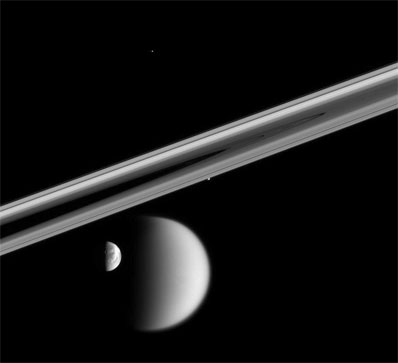
Spaceflight Now +

|

|

|

|

Premium video content for our Spaceflight Now Plus subscribers.

Hubble Space Telescope
 Scientists marvel at the achievements made by the orbiting Hubble Space Telescope in this produced movie looking at the crown jewel observatory that has served as our window on the universe. Scientists marvel at the achievements made by the orbiting Hubble Space Telescope in this produced movie looking at the crown jewel observatory that has served as our window on the universe.

 Play video Play video

SOHO anniversary
 10 years ago: The Solar and Heliospheric Observatory, a joint European and American Sun-watching probe, blasts off from Cape Canaveral aboard a Lockheed Martin Atlas 2AS rocket. 10 years ago: The Solar and Heliospheric Observatory, a joint European and American Sun-watching probe, blasts off from Cape Canaveral aboard a Lockheed Martin Atlas 2AS rocket.

 Play video Play video

Huygens science results
 The European Space Agency's Huygens probe, launched from NASA's Cassini spacecraft, descended through the atmosphere of Saturn's moon Titan and landed on its mysterious surface in January. Scientists hold this news briefing to report on new results from the daring mission. The European Space Agency's Huygens probe, launched from NASA's Cassini spacecraft, descended through the atmosphere of Saturn's moon Titan and landed on its mysterious surface in January. Scientists hold this news briefing to report on new results from the daring mission.

 Play video Play video

Mars Express update
 Project scientists working on the European Space Agency's Mars Express spacecraft now orbiting the Red Planet hold a news conference to announce some interesting results from the ongoing mission. Project scientists working on the European Space Agency's Mars Express spacecraft now orbiting the Red Planet hold a news conference to announce some interesting results from the ongoing mission.

 Play video Play video

An American in orbit
 Mercury astronaut John Glenn becomes the first American to orbit the Earth on February 20, 1962, when he is launched aboard Friendship 7. Mercury astronaut John Glenn becomes the first American to orbit the Earth on February 20, 1962, when he is launched aboard Friendship 7.

 Play video Play video

 Become a subscriber Become a subscriber
 More video More video

|

|

|

|
|

|

When moons align...
CASSINI PHOTO RELEASE
Posted: December 4, 2005

Credit: NASA/JPL/Space Science Institute
Download larger image version here
|
In a rare moment, the Cassini spacecraft captured this enduring portrait of a near-alignment of four of Saturn's restless moons. Timing is critical when trying to capture a view of multiple bodies, like this one. All four of the moons seen here were on the far side of the rings from the spacecraft when this image was taken; and about an hour later, all four had disappeared behind Saturn.
Seen here are Titan (5,150 kilometers, or 3,200 miles across) and Dione (1,126 kilometers, or 700 miles across) at bottom; Prometheus (102 kilometers, or 63 miles across) hugs the rings at center; Telesto (24 kilometers, or 15 miles across) is a mere speck in the darkness above center.
The image was taken in visible light with the Cassini narrow-angle camera at a distance of approximately 3.4 million kilometers (2.1 million miles) from Dione and 2.5 million kilometers (1.6 miles) from Titan. The image scale is 16 kilometers (10 miles) per pixel on Dione and 21 kilometers (13 miles) per pixel on Titan.
The Cassini-Huygens mission is a cooperative project of NASA, the European Space Agency and the Italian Space Agency. The Jet Propulsion Laboratory, a division of the California Institute of Technology in Pasadena, manages the mission for NASA's Science Mission Directorate, Washington, D.C. The Cassini orbiter and its two onboard cameras were designed, developed and assembled at JPL. The imaging operations center is based at the Space Science Institute in Boulder, Colo.
|

|

|

|

|



